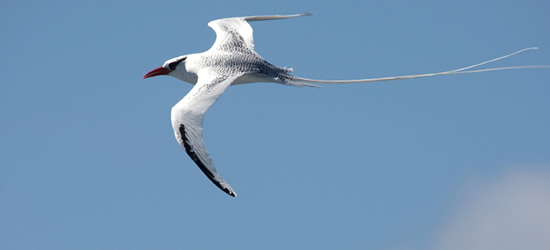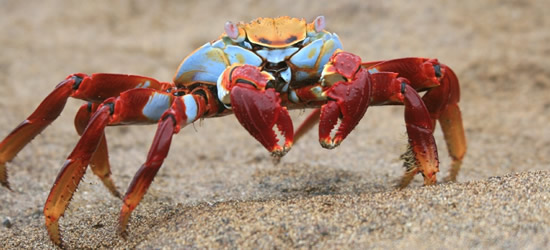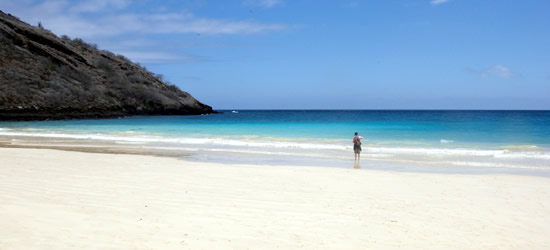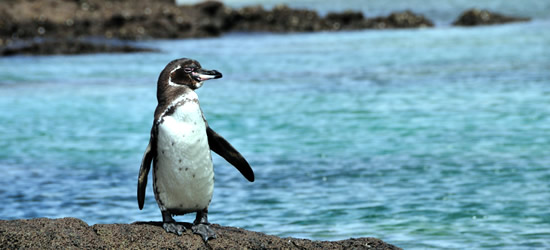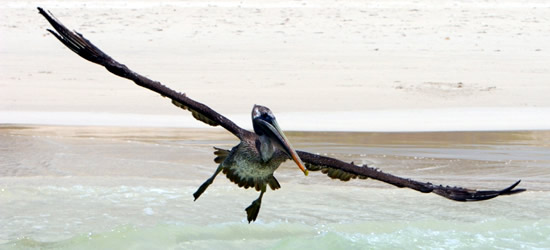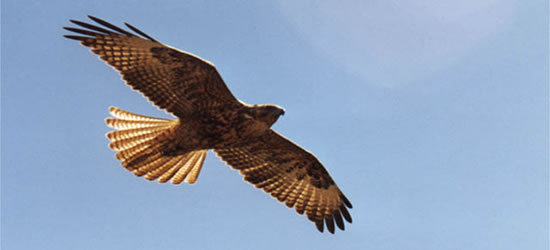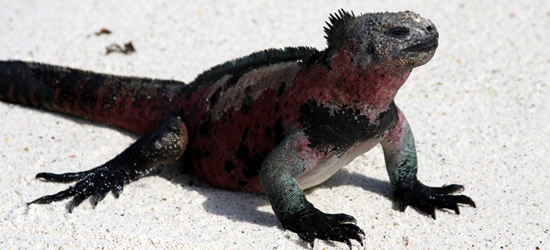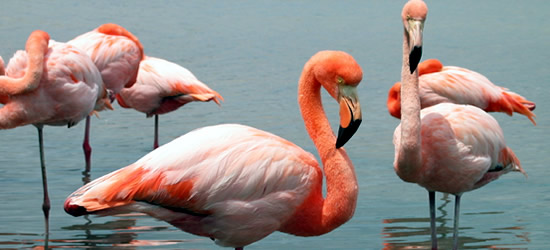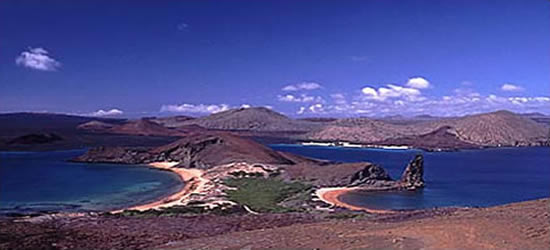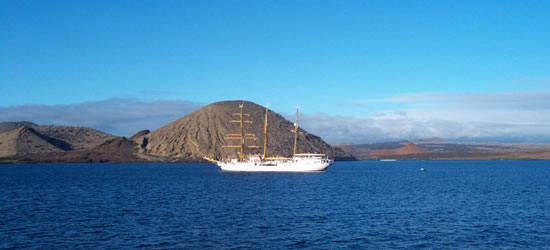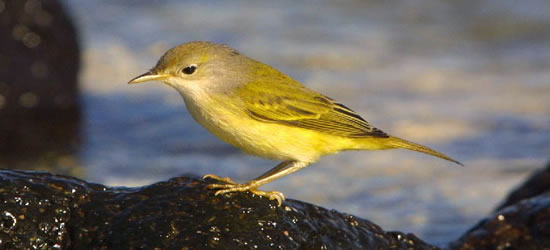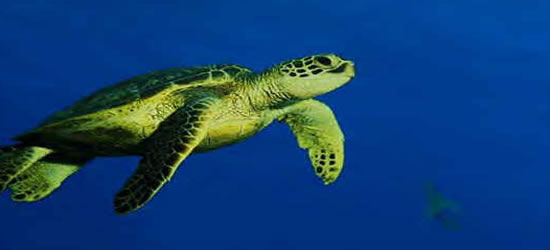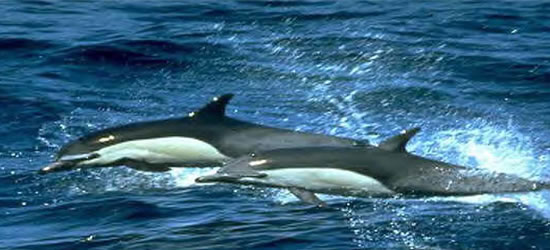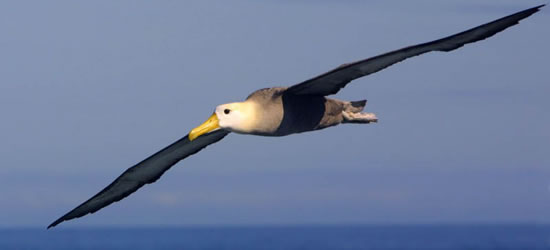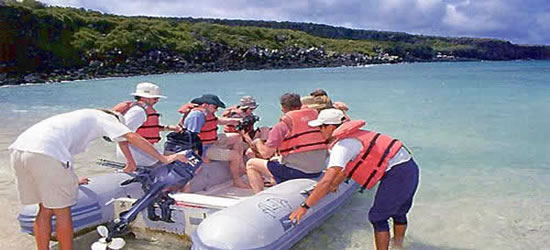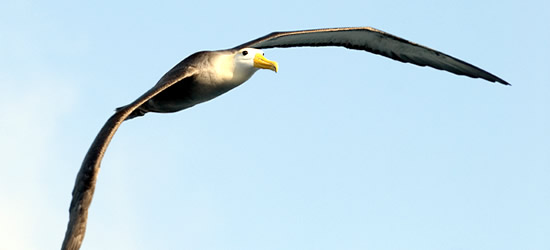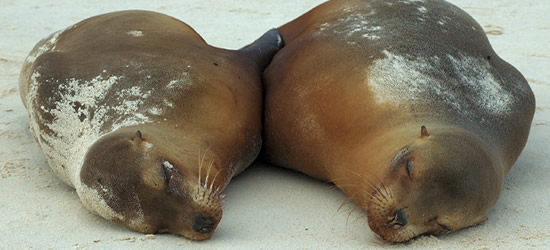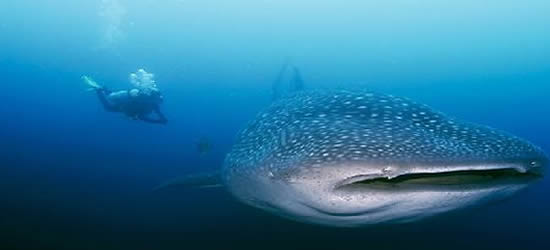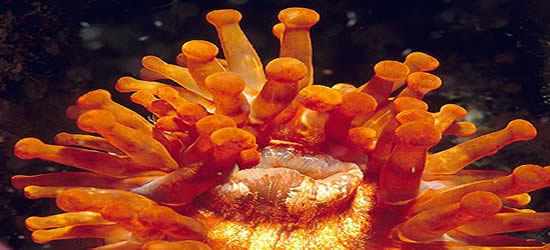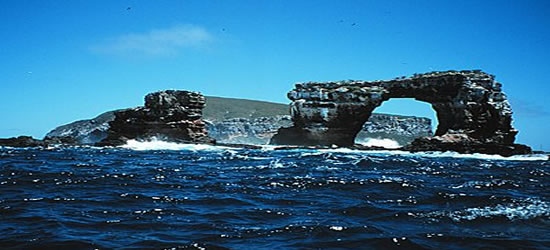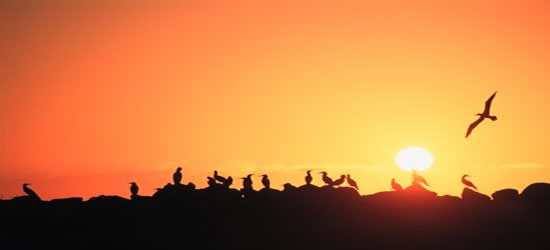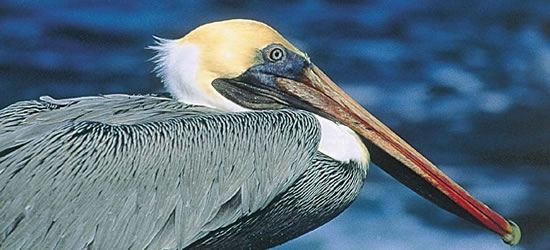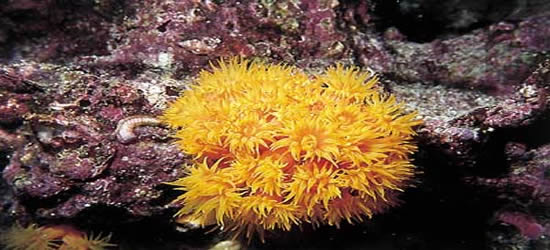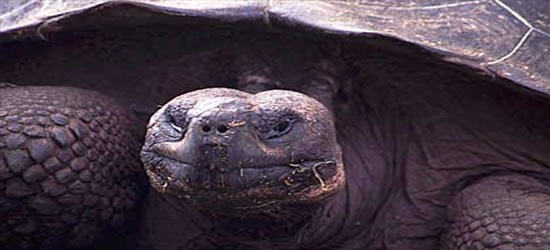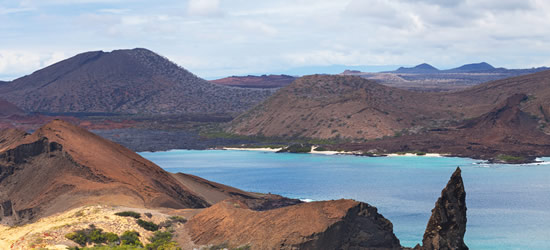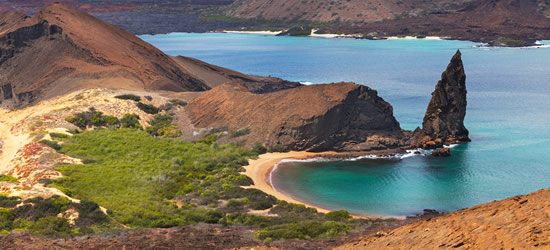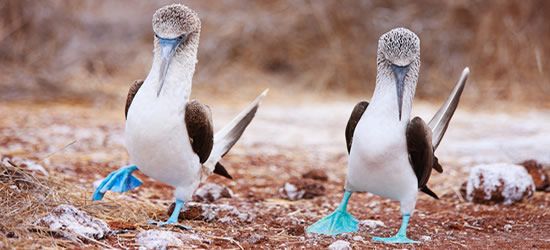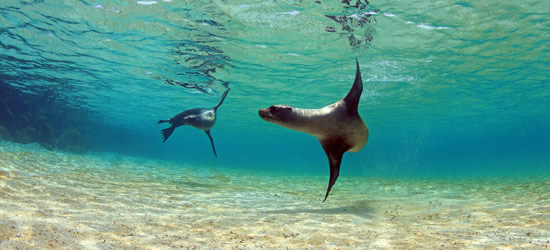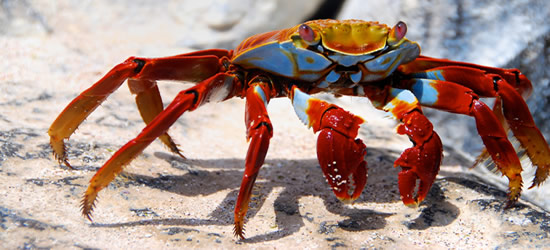The Galapagos Islands are directly on the equator, about 1,000 kilometres west of mainland Ecuador, with a total land mass of 7,882 square kilometres, including 13 major islands and dozens of smaller islands spread over 50,000 square kilometres of the Pacific Ocean. Unlike Cocos Island (North of Galapagos), which is accessible only by a 38 hour boat ride, the Galapagos Islands are only an hour and a half away from the coast by air.
The main attraction is the wildlife, where due to the isolation from the mainland and preponderance of reptile, bird and marine species, with few predators, new species have evolved on different islands. The observation of this fact played a large part in Charles Darwin's formulation of his theory of evolution expressed in his 'Origin of Species', after a visit in 1835. Perhaps the most noteworthy feature of the islands is the lack of fear shown by the wildlife.
Today most of the islands are a National Park, and visitor numbers are controlled. Access is limited to marked paths and all groups must be accompanied by a trained guide. All this however, is positive, and will have no impact on your enjoyment of the richness of the natural history: its future preservation depends on the financial contribution made by the 40-50,000 annual visitors.
The Galapagos are as spectacular below the water as it is above. As there are both cold currents from Antarctica and warm ones from the Pacific the marine life is particularly varied. Of the 300 fish species about 50 are endemic, and it is usual to spot many eagle rays, barracudas, bonitos, scalloped hammerhead sharks, open water jacks and many tropical species. Because of the strong currents and cold water diving should only be attempted by experienced divers and for this reason we recommend only specific dive cruises, where yachts are fully equipped with tanks and necessary apparatus. These cruises usually offer diving twice a day, occasional land visits (such as Wolf and Darwin) with only dive sites.
The US dollar is the currency of Ecuador and the Galapagos Islands and they request that you take clean dollars bills with you, particularly a stack of one dollar bills, which comes in handy for tips, taxis and other small expenses. We suggest you take either cash or traveler's cheque's with you for payments in Ecuador as there is a universal 10% service charge on any credit card payments.






